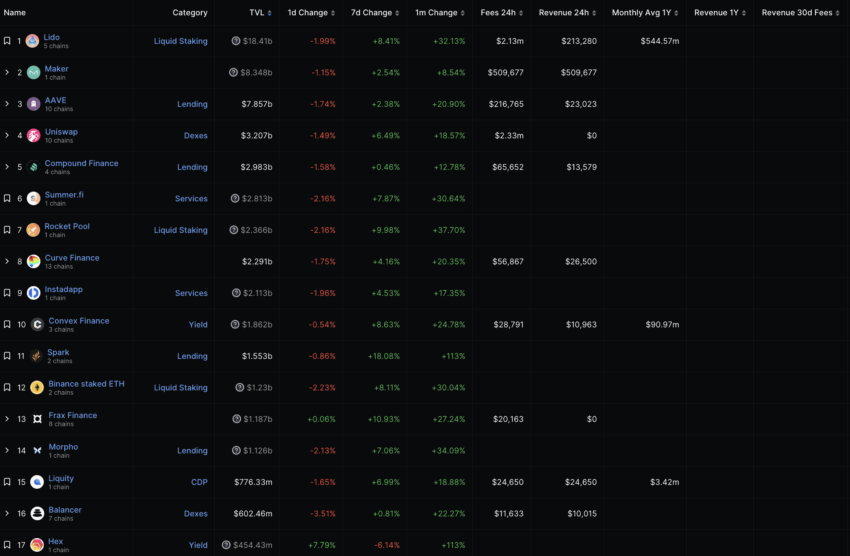Profitability in the crypto realm isn’t only about the trading and investing gains. Instead, you can use your existing cryptocurrency holdings, crypto hardware, and insights to generate what we call passive income. Passive income options in crypto are diverse — from crypto staking to mining to leveraging DeFi resources and waiting on chain forks and airdrops — but require patience and some level of strategic thinking.
Yet, the heartening thing here is that once you delve into the depths of passive income, you hardly need to move a finger. It is the little to no daily effort that makes passive income ideas in crypto so practical and worth visiting. Discover our list of top crypto passive income ideas for 2024 and beyond.
But first, here are the top Centralized Exchanges (CEXs) that you can consider for active income (trading) and passive income generation. It is always advisable to keep the platforms handy.
Top Exchanges for Passive and Active Crypto Income
Coinbase
Best for Beginners
OKX
Best for Experienced UsersKraken
Best SecurityIn this guide, “Top 4 Crypto Passive Income Ideas that Really Work in 2024, ” we handpicked several crypto service providers — exchanges, staking solutions, cloud mining services, and portfolio trackers. The names listed include Coinbase, Kraken, OKX, Uphold, Binance, YouHodler, Hashfrog, Hashing24, Delta App, and Coinstats. Yet, none of these choices were random as we followed a set method to zero in on these providers, aligning with the expectations of the crypto experts, novices, and curious folks.
Coinbase shows up on the list as a trading exchange, wallet, and staking service provider, courtesy of its support for 200+ cryptocurrencies and regulatory compliance. Kraken makes it to the list for its robust security posture — support for two-factor authentication, SMS and email verification, and more. Additionally, Kraken offers staking on 15+ cryptos, with yields going as high as 20% for specific assets. Both Coinbase and Kraken offer tons of educational resources housed as part of Coinbase Learn and Kraken Learn, respectively. The competitive trading fees between 0.05% to 0.60%, followed by tight bid-ask spreads between 0.01% and 0.02%, ensure a cost-effective trading experience.
OKX is mentioned as an exchange courtesy of its support for 400+ cryptocurrencies. Plus, it offers decent staking yields and doubles down as a hybrid wallet with exchange integration and access to advanced trading tools involving derivatives. OKX also stands out with its notable liquidity in the derivatives market and an impressive trading volume totaling $27,891,732,134.
This platform is particularly suited for experienced traders, offering low funding rates and competitive bid-ask spreads between 0.01% and 0.04%. Such features render OKX an excellent option for efficiently managing trades of significant volume.
Uphold is mentioned courtesy of its “Anything-to-Anything” trading experience. It offers over 130 crypto picks for trading and staking with a competitive fee range of 0.85% to 1.2%. Then comes Binance, one of the largest crypto exchanges. Binance features on the list due to its competitive fee — 0.1% to 0.5% — followed by 600+ crypto assets.
YouHodler wallet appears as it lets you in on high-interest staking and savings accounts. There is support for 50+ cryptocurrencies followed by access to crypto-backed loans and deposit accounts, with deposit interest rates going as high as 12%.
Regarding cloud mining services, Hashfrog is one of the few firms to rely on green energy sources for mining. Plus, it offers diverse mining plans — based on expected ROI, hash power, and more. Hashing24, on the other hand, is more Bitcoin-centric in mining. Additionally, it offers flexible mining contract terms and employs advanced security measures like two-factor authentication and SSL encryption to protect user data.
Finally, for investment tracking, we have picked the Delta app for its ability to easily monitor investments and staking returns and Coinstats for its real-time tracking alerts for 8,000+ crypto assets.
Ultimately, the rationale behind BIC’s choice of platforms lies in competitive trading fees, attractive interest rates, support for crypto assets, and other elements.
To learn more about BeInCrypto’s Methodology Verification, click here!
- The first strategy: Crypto staking
- Coinbase
- Kraken
- Uphold
- Binance
- OKX
- The second strategy: Crypto mining
- HashFrog
- Hashing24
- The third strategy: Airdrops and forks
- The fourth strategy: Yield farming and liquidity mining
- Additional strategies to generate crypto passive income
- Tracking your crypto income
- Passive income vs. active income: Which one to consider?
- Is crypto passive income safe?
- Crypto passive income options are plentiful
- Frequently asked questions
The first strategy: Crypto staking
Arguably the gold standard of passive income generation, staking coins is common and offered by several centralized and even decentralized crypto exchanges. The idea is simple: you lock your crypto assets inside a protocol or chain, bolstering network security, helping verify transactions, and earning a regular fee in the process.
Note that crypto staking, as a passive income strategy, only works with proof-of-stake blockchains.
Staking platform to consider
As staking is more of a PoS-specific strategy, it is advisable to connect with reliable CEXs to execute this passive income idea. When it comes to credibility, some of the best crypto-staking platforms include the following:
Coinbase
Kraken
UP to 21% for Bonded plans
Uphold
OKX
Most of these platforms have dedicated “Stake Now” pages, helping you lock your cryptocurrency and immediately start earning passive rewards. In case you are unsure how to stake crypto for passive income, you can either visit staking pools on DEXs, work directly with staking wallets like Trust Wallet, or check out the ecosystem-specific gains using platforms like Staking Rewards before choosing a CEX.
But which coins should you stake in 2024 or beyond? While the chances at higher APY and staking possibilities might change with time, ethereum remains one of the top staking coins, especially post-merge. Besides that, tezos (XTZ) — a web3 offering — polkadot (DOT), solana (SOL), and cardano (ADA) comprise an aggressive staking portfolio.
Staking strategies
The best staking strategy is to avoid mistakes while staking coins/tokens. It is common for newbies to fall for high-yield promises, easy staking options, and platforms where a heavy commission is charged. Another staking mistake is to rely way too much on custodial staking entities. Even though using CEXs is okay, it is always better to be safe and work with non-custodial wallets like MetaMask, later connecting to CEXs and DEXs to completely control the assets.
For coin staking, some top choices are ETH, FIL, and HNT. Regarding ETH, mining is discontinued as Ethereum has transitioned to the proof-of-stake ecosystem. So, instead of ethereum mining, ethereum staking is the new normal. To stake, you can connect with a liquid staking platform like Lido or Rocketpool for staking ETH or choose to be a validator by staking a minimum of 32 ETH.
Top coins to stake
Filecoin staking is about contributing to network security. To get things rolling, you need to connect with a reliable filecoin staking platform like Gemini or Coinlist. You can choose any compatible wallet that holds your FIL, such as Ledger, connect with the choice of staking platform, analyze the APY rates, and do the needful.
For staking helium (HNT), you can connect, choose the likes of Binance or OKX, and stake HNT directly from your wallet. For helium staking as a validator, you must lock at least 10,000 tokens. Or, you can head over to the mentioned CEXs and use wallets like the official helium wallet, Ledger, etc. However, if you prefer hybrid, self-custody, or other specialized wallet options, here are our top picks:
Innovative Wallet Options
Coinbase Wallet
Best Self-Custody Wallet OptionOKX Wallet
Best Hybrid WalletYouHodler Wallet
Best Custodial WalletThe second strategy: Crypto mining
While staking is more of an APY-specific passive income generator, cryptocurrency mining, as an idea, is a tad more personal to the blockchain ecosystem. Bitcoin, the first commercially successful cryptocurrency, currently with the largest market share, still adheres to the crypto mining ethos, boasting a proof-of-work consensus. The “work” in proof-of-work can be identified as mining.
Bitcoin and altcoins
Even though bitcoin supports BTC mining — a process where new transactions are added and verified when miners solve complex puzzles — there are other altcoins that can also be mined. Mining crypto is an energy and cost-intensive process. However, the end result is the ability to earn a steady passive income.
To mine bitcoin or any other PoW crypto, you can follow various approaches, including setting up your own mining hardware set, relying on cloud mining services, joining cryptocurrency mining pools, and more. But then, in case you want to set up your own rig for mining bitcoin from home, you must consider the energy-specific costs. Plus, it is time and cost-intensive to build a mining rig from scratch.
As a miner, you should also be careful of unscrupulous, free bitcoin mining scams that promise access to free mining pools, free BTC, zero-cost services, and more. The best approach would be to conduct detailed research about the coin/token you are mining before proceeding.
What else can be mined?
While Bitcoin mining is still largely profitable, some of the other profitable gigs include mining Ravencoin (RVN), Grin (GRIN), and Monero (XMR).
Here is a quick guide to mining each:
Monero mining
For mining monero you might want to invest in a powerful GPU. It is worth noting that CPU mining is also supported by XMR, but yields are better with a graphics card. Once the GPU is zeroed in on, you should invest in the right software module — like XMRig or XMR-STAK-RX.
As XMR mining is difficult, it is better to join a mining pool. Once done, you would want to configure the miner by setting up software, wallet address, and pool information. After that, you can start mining.
Ravencoin mining
Ravencoin mining can be handled by both ASIC and GPU miners. Additionally, you would also need to invest in ravencoin mining software like T-Rex or GMiner to get things started. Post that, you can join a mining pool, get the RVN wallet, choose the pool’s server location, and start mining.
Grin mining
Grin (GRIN), a privacy-focussed cryptocurrency, can also be mined with exceptional yields. To go about it, you can start with a GPU. The choice of GPU would depend on the type of algorithm you use. You can use BMiner or GMiner as the choice of software, enlist to a mining pool, and set up the wallet and other specs to get started with Grin mining.
Notably, even ethereum (ETH) was mineable before it transitioned to the proof-of-stake ecosystem. Well, if you still have those Ethereum mining rigs handy, you can use the same for mining ravencoin, ergo, and other cryptocurrencies.
Also, if you want some other options to generate passive income from crypto mining, Ethereum Classic and Litecoin mining options can also be profitable.
The role of cloud mining
If you want to amplify your passive income from crypto mining, cloud mining is a handy way to get started. This strategy ensures that you do not need to invest in a separate mining rig and get started right away by simply renting computing power.
To get started, it is always better to rely on cloud mining services that are credible, have transparent pricing, and boast positive reviews. Some of the best picks include NiceHash and Genesis Mining. Once you choose a cloud mining website, like StormGain, Hashing24, or even some of the compatible CEXs like Binance or KuCoin, you need to choose the preferred crypto to mine.
/Related
More ArticlesHere are our cloud mining picks that can help you start accruing passive income faster than you can imagine:
HashFrog
Hashing24
Let us see what happens and how things flow if you choose to mine bitcoin.
If you want to try out the traditional way, you can buy yourself an ASIC mining rig and get started. However, you can also try out the likes of StormGain and YouHodler for free cloud mining bitcoin (BTC). If you are willing to pay, onboarding BitFuFu, Binance, IQ mining, and other platforms can help you with bitcoin mining from home.
Free bitcoin mining: What’s that?
While we did discuss a little about free bitcoin mining and the associated threats, let us explore it further. To mine and earn free bitcoin without investment, you need to install a mining browser. This passive mining strategy still uses power — your PC juice — to mine the BTC.
There are several free cloud mining service providers like HoneyMiner or BitzFree that also use the power of your computing device to mine BTC. However, these services aren’t completely free, as earning via advertisements, referrals, paid plans, and user resources are often the more utilized and preferable options. Therefore, it is advisable to do extensive research before making a decision when choosing a free mining service.
Here is Vitalik Buterin’s take on mining using your phone’s computing power:
“Mining on phones is a fool’s game. Goes against everything we know about hardware economies of scale and more likely to trick users with false hope than help them.
*Staking* on phones, OTOH, is IMO quite promising…”
Vitalilk Buterin, co-founder of Ethereum: Twitter
Even if you mine using your computing device(s), ensure that the details of your credit cards or other personal info are not shown or shared.
Is crypto mining profitable?
Still on the fence about crypto mining? If you are ready to take into account the electricity costs associated with bitcoin or altcoin mining, things can get really interesting regarding profitability.

Besides that, crypto mining profitability also depends on the type of rig or hardware you plan on using. Other factors include mining difficulty, operational costs in case you plan on using cloud mining services, and the current market price of an asset.
Did you know? Ethereum’s transition to the Proof-of-stake realm made the Ethereum network more energy efficient, reducing the overall energy consumption by 99.95%. This aligns with Vitalik Buterin’s initial projection that the PoS transition would lower the global consumption of electricity by 0.2%.
Now that we have discussed crypto mining at length, let us explore other passive income-generating ideas in crypto.
The third strategy: Airdrops and forks
Crypto airdrops and blockchain forks are two proven ways to earn free crypto and amplify your passive income-generating chances. Let us delve deeper.
Unpacking airdrops
Crypto airdrops represent the free distribution of tokens or coins within the cryptocurrency community. Free tokens or coins are sent to targeted wallet addresses. In most cases, crypto airdrops are initiated to reward loyal project users or as a shilling attempt to market the project.
Besides coins and tokens, even NFTs are airdropped as an attempt to market projects, new collections, or reward users. Crypto and NFT airdrops also make the project(s) more decentralized, ensuring that the community holds a sizable chunk of the offerings.
To earn steady passive income, you must keep track of upcoming airdrops for the given year. One of the more anticipated airdrops was Arbitrum’s native ARB crypto, with over 42 billion tokens claimed within the first 60 minutes of the airdrop event going live. There will be many more top airdrops waiting for us in 2024, with significant expectations around the zKSync token.

Unpacking lockdrops
When it comes to earning free crypto, lockdrops can also come in handy. Unlike airdrops, where new coins are credited to specific wallets, lockdrops require users to lock certain tokens of a specific cryptocurrency to gain a set number of the new, lock-dropped tokens. Something similar happened with edgeware (EDG), as users had to lock their ETH into a smart contract for a specific period in return for EDG tokens.
Lockdrops reduce the circulating supply of the more established asset while increasing the value of the new token by making it available to interested users.
Forking and passive income
For the uninitiated, forks are like new, contentious versions of older blockchains. They often lead to the issuance of new tokens, which the users holding tokens of the parent chain are awarded as free cryptocurrency. Forks are not as common as token airdrops, but they are certainly a great way to generate passive income.
A notable example would be how Bitcoin forked to make way for Bitcoin Cash (BCH). Existing bitcoin holders were given BCH coins equivalent to their BTC holdings.
The fourth strategy: Yield farming and liquidity mining
Both yield farming and liquidity mining are core concepts of decentralized finance. And while even staking forms a part of the DeFi catalog, these strategies aren’t restricted to PoS cryptocurrencies. Let us understand how each works.
How does yield farming work?
Yield farmers provide liquidity to a DeFi protocol, making them eligible for rewards. The rewards are the protocol’s native coins/tokens in most cases. Simply put, yield farming refers to staking or lending crypto assets within a decentralized financial ecosystem powered by smart contracts.
Some of the leading blockchain ecosystems with credible yield farming exposure include Ethereum, Binance, Fantom, and Polygon.
Top yield farms on Ethereum
If you are an Ethereum native and interested in exploring the world of passive income, here are some of the top yield farms on Ethereum,
1. UniSwap
Native token: UNI
UniSwap is one of Ethereum’s most popular DEXs and a DeFi protocol. It is best known for its automated liquidity provisioning feature.
2. Yearn Finance
Native token: YFI
Using Yearn Finance, you can move funds or rather shift liquidity between diverse lending protocols.
3. Curve
Native token: CRV
This protocol excels if you are interested in stablecoin swaps. Curve also boasts several deep liquidity pools and has one of the lowest fees and slippage in the space.
4. SushiSwap
Native token: SUSHI
Here is a community-driven DEX that excels in automatic market-making, allowing users access to deep liquidity repositories.
5. Aave
Native token: AAVE

Aave is a leading DeFi lending platform, allowing users to borrow assets as well as lend and earn interest.
Top yield farms on Binance Smart Chain (BSC)
BSC or the Binance Smart Chain is a worthy Ethereum alternative in case you are looking to explore other passive income generators. Some of the top yield farms on BSC include the Venus Protocol, AutoFarm, PancakeSwap, Pancake Bunny, and the BakerySwap. Notably, some of these firms double down as DEXs, AMMs, and NFT marketplaces.
Top yield farms on Polygon
Polygon is yet another popular DeFi ecosystem. Here are the top-yield farms on Polygon that you can explore:
- Aave
- SushiSwap
- DFYN
- QuickSwap
- Polycat Finance
Some yield farms like Aave have a multi-chain presence, making them the epitome of blockchain interoperability.
Top yield farms of Fantom
Fantom happens to yet another credible DeFi ecosystem. If it’s your native chain to work with, the top Fantom yield farms include SpiritSwap, HyperJump, SpookySwap, and Waka Finance.
If you are a DeFi degen, we recommend trying out all the mentioned yield farms and sticking with the one that’s best for you.
Yield farming vs. staking: Which one to choose?
Staking is a relatively straightforward way of earning passive income. Most CEXs offer dedicated staking services, and PoS cryptos allow direct staking, where you can simply lock your native holdings to secure the network.
Plus, staking also branches out as liquid staking. This works like a staking derivative, allowing users to lock any number of tokens for any period without worrying about liquidity. For instance, stETH is a liquid staking alternative to standard ETH, synonymous with the Lido staking platform.
Yield farming is a tad more complex. The idea is to have two sets of coin/token holdings and add both to a pool, with those two coins/tokens forming a pair. For instance, if you hold both ETH and DAI, you can head to UniSwap and add liquidity to the DAI/ETH pool. In return, you earn steady passive income in the form of trading fees, typically in UNI.
Yield farming is riskier and comes with the impermanent loss risk, but it can facilitate higher returns.
However, even staking, precisely liquid staking, can give high returns, provided you know where to look. While Lido is one of the more popular options, with APR going as high as 6.5%, you can even utilize the following:
- Rocketpool
Yield APR: Up to 7.08%
- Parallel DeFi
APR: Up to 20%
- StaFi
Yield APR: Up to 23.17%
While these are the most profitable liquid staking platforms, some even allow you to stake coins and tokens other than ETH. For instance, on StaFi, you can stake SOL, DOT, BNB, ATOM, and several other cryptocurrencies.
To sum up yield farming vs. staking, staking requires access to the right PoS crypto assets, whereas yield farming allows the use of stablecoins to generate income.
Unpacking liquidity mining
Yield farming can become complex as it involves a lot of associated strategies, such as re-staking the rewards. Note that liquidity mining is arguably the most notable and rewarding element of yield farming, where users simply supply liquidity to specific pools and earn a steady passive income stream.
Additional strategies to generate crypto passive income
While we have covered most of the common strategies, there are a few other ways to earn passive income with crypto. These include:
Crypto savings accounts
Centralized exchanges like BlockFi allow users to use their crypto holdings to earn interest by locking them into a savings account of sorts. This way, you can even earn an annual compounding rate similar to the ones offered by traditional banks.
Crypto lending
On DEXs like Compound and Aave, you can lend out your cryptocurrencies to earn interest. Some CEXs also offer lending services. For instance, you can lend out USDC via the Compound DEX and earn interest in COMP.
Crypto stocks
Many traditional global companies have crypto exposure or offer services related to crypto mining in the form of rigs. Investing in crypto mining stocks like those from BitFarms Limited, Riot Blockchain, and more can be beneficial should mining gain popularity immediately after the upcoming bitcoin halving event.
Besides mining stocks, you can also invest in companies like Coinbase and Microstrategy that either offer crypto services or have exposure to crypto. Stock price appreciation and dividends are the possible ways of earning passive income when invested in these stocks.
NFTfi
Let us circle back to the section where we discussed NFT airdrops. Well, if you get one NFT airdrop in your wallet and the asset appreciates in value, you can flip it to generate some income. Plus, certain platforms also allow you to borrow funds against your NFTs — which you can use to engage in staking, liquidity mining, and other activities to earn passive income.
Additionally, NFT staking on platforms like MOBOX and Binance Powerstation is another lesser-known strategy. This option lets you earn passive income while interacting with communities and projects. Note that NFT staking requires the highest level of due diligence and is an extremely high-risk investment.
Token governance
One of the lesser-known lucrative strategies to earn extra income is to participate in the token governance of any DeFi protocol. For instance, COMP holders can propose and vote on changes made to the protocol. And active voters receive additional tokens. The same concept holds for other ecosystems like MakerDAO.
Tracking your crypto income
Now that you know a fair bit about generating passive crypto income, you must know about the best ways to track the same. Portfolio trackers help you view investment-related analytics in real-time, track diverse wallet and exchange integrations, and even facilitate portfolio rebalancing and tax reporting if and when required. Here are the top portfolio trackers to consider:
Best Portfolio trackers for asset allocation and performance tracking
Delta App
Best for Privacy-Conscious Investors
CoinStats
Best for Comprehensive Asset Tracking
Passive income vs. active income: Which one to consider?
Now that we have listed all the possible passive income-generating strategies, plans to track them, and more, let us analyze if it is a better bet that active or trading-specific income.
Active income in crypto is all about timing the market, especially to navigate the high volatility of crypto assets. And while the latest rally in crypto would validate the rewarding nature of this strategy, passive income ideas aren’t actually depending on the price surges. Passive income ideas in crypto take a different and more balanced route, reliant on concepts like proof-of-stake (PoS) staking, liquid staking, smart contracts, DeFi lending, crypto savings accounts, and more.
Here is a quick example.
If you like MakerDAO as a project, you can consider investing in or trading the native token MKR as part of the active strategy. However, if you go into the depths of the project, a good strategy would be to hold the native stablecoin DAI and earn via the savings rate, relying on the stability of these assets.
It is the revenue of the MakerDAO protocol that determines your earning potential. That is how passive income ideas function within the crypto realm.
If you are a holder or a long-term cryptocurrency investor who does not swap or sell assets frequently, passive income might be a solid strategy. This way, you can buy low, wait for the actual cryptocurrency to grow 10x or 100x over the years, and keep using the held assets to generate steady income. Less work and, surely, less stress!
Is crypto passive income safe?
If you work with credible staking platforms, mining services, projects, and DeFi protocols, there will be fewer safety concerns with crypto passive income. It’s important to be wary of scams and ensure you only click official links. Regulatory barriers also exist, depending on whether a region allows CEXs to offer staking services or miners to run mining pools due to high electricity costs and heat generation.
In case you are a miner, ensure you are operating in a region where bitcoin mining is legal, as BTC is certainly the most popular and mineable crypto around.
It is always advisable to refrain from yields, free mining services that promise exceptional payouts, unverified airdrops, and other opportunities that sound too good to be true. Besides that, you should do your own research, ensure local law compliance, and revisit the regulatory landscape before proceeding.
Is crypto passive income taxable?
Crypto profits and passive income are taxable in several countries. For instance, in the United States, staking rewards and even yields are subject to capital gains tax. In the U.K., taxes apply on mining, staking, and airdrops. Besides these countries, Canada, the entire European Union, India, and Australia are some other regions where you must pay taxes on passive income from crypto, mostly as capital gains tax.

Crypto passive income options are plentiful
From staking to mining to airdrops to liquidity provisioning and beyond, this guide has covered most passive income options in crypto. However, not every strategy is meant for everyone. Before you onboard any plan, you should look at past records and regulatory standards in the given region, ascertain your risk appetite, and then move forward. It’s wise to stick with tried and tested avenues such as ETH staking or bitcoin mining. Always do extensive research and never invest more than you can afford to lose.
Frequently asked questions
Can you make passive income from crypto?
Can you make $100 a day with crypto?
How do you make $1000 a month mining crypto?
Which crypto is best for passive income?
Which cryptocurrency pays daily?
How do I start earning passive income with crypto?
What is passive income staking in crypto?
Can I earn passive income on Binance?
Which crypto is best for passive income?
How to earn passive income with USDT?
Can you lose crypto by staking?
Is crypto a good passive income?
What are the methods of making passive income in crypto?
Trusted
Disclaimer
In line with the Trust Project guidelines, the educational content on this website is offered in good faith and for general information purposes only. BeInCrypto prioritizes providing high-quality information, taking the time to research and create informative content for readers. While partners may reward the company with commissions for placements in articles, these commissions do not influence the unbiased, honest, and helpful content creation process. Any action taken by the reader based on this information is strictly at their own risk. Please note that our Terms and Conditions, Privacy Policy, and Disclaimers have been updated.






